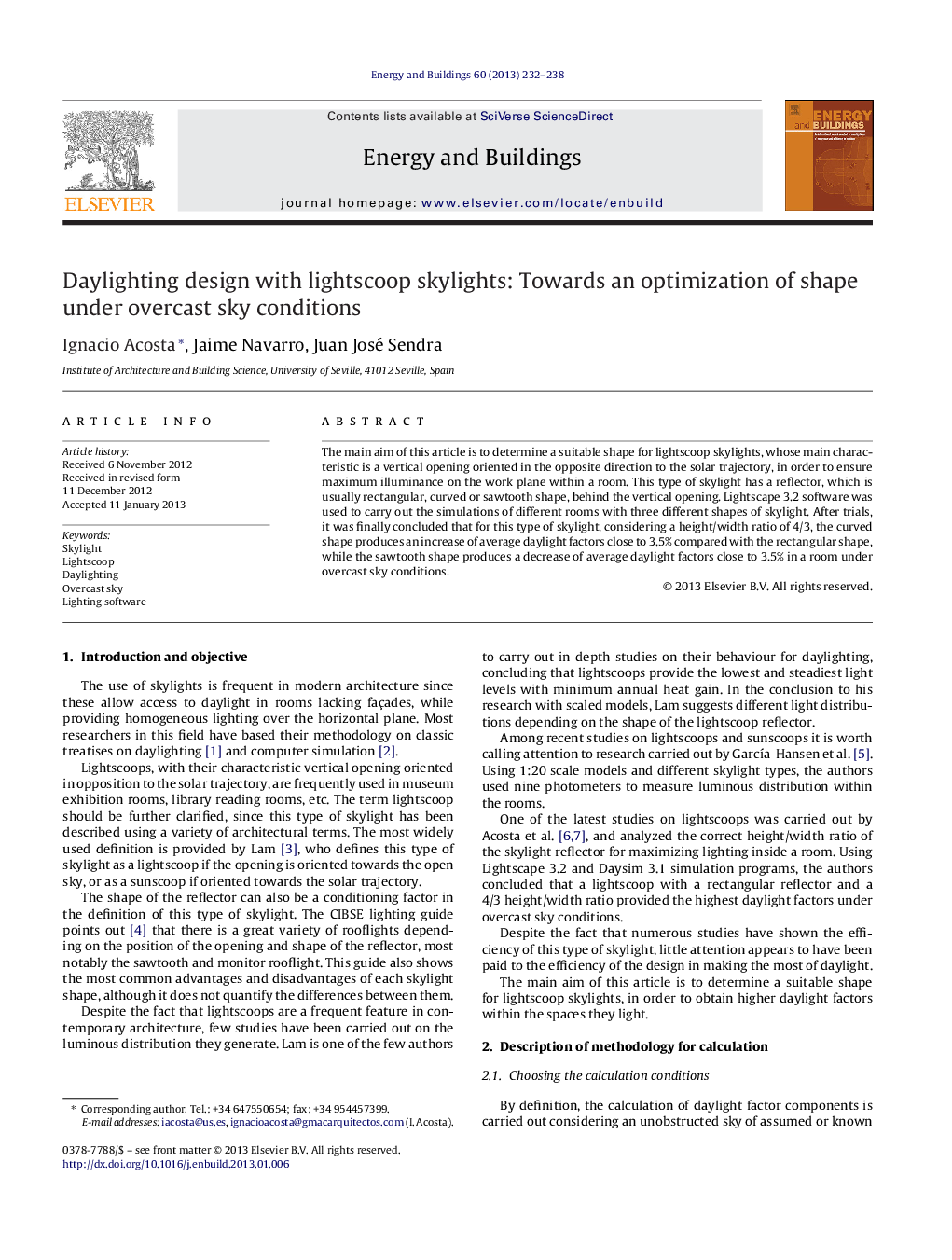| Article ID | Journal | Published Year | Pages | File Type |
|---|---|---|---|---|
| 263352 | Energy and Buildings | 2013 | 7 Pages |
The main aim of this article is to determine a suitable shape for lightscoop skylights, whose main characteristic is a vertical opening oriented in the opposite direction to the solar trajectory, in order to ensure maximum illuminance on the work plane within a room. This type of skylight has a reflector, which is usually rectangular, curved or sawtooth shape, behind the vertical opening. Lightscape 3.2 software was used to carry out the simulations of different rooms with three different shapes of skylight. After trials, it was finally concluded that for this type of skylight, considering a height/width ratio of 4/3, the curved shape produces an increase of average daylight factors close to 3.5% compared with the rectangular shape, while the sawtooth shape produces a decrease of average daylight factors close to 3.5% in a room under overcast sky conditions.
► We analyze optimum shapes of lightscoop skylights for maximum daylighting. ► We studied three different shapes of skylight: rectangular, curved and sawtooth. ► Each shape of skylight was studied in three room sizes using simulation software. ► The curved skylight produces higher daylight factors than the rectangular one. ► The sawtooth skylight produces lower daylight factors than the rectangular one.
